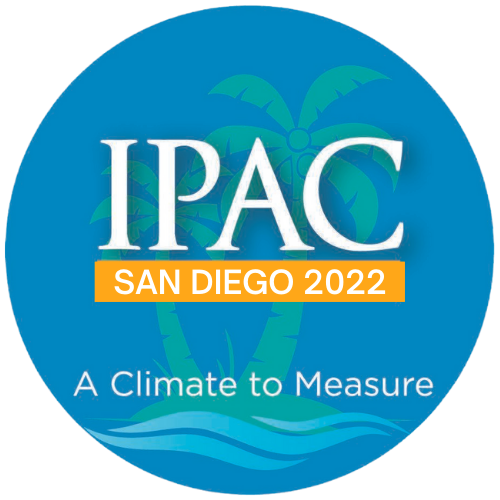MonsterGov Leads IPAC Panel on Federal Agency Response to Skills-Based Hiring EO
 Federal agencies have shared their eagerness in connecting with each other on the skills-based hiring assessment reform, as existing guidance and resources are limited. MonsterGov’s manager of I/O Psychology Services, Shannon Kobus, served as the Conference Planning Committee Chair of International Personnel Assessment Council’s (IPAC’s) 2022 Conference, so she organized a panel with federal hiring stakeholders from OPM, Interior, and HUD to share resources and best practices with IPAC conference attendees on implementing the Executive Order.
Federal agencies have shared their eagerness in connecting with each other on the skills-based hiring assessment reform, as existing guidance and resources are limited. MonsterGov’s manager of I/O Psychology Services, Shannon Kobus, served as the Conference Planning Committee Chair of International Personnel Assessment Council’s (IPAC’s) 2022 Conference, so she organized a panel with federal hiring stakeholders from OPM, Interior, and HUD to share resources and best practices with IPAC conference attendees on implementing the Executive Order.
Panelists:
- Michael Blair, Lead Personnel Research Psychologist, U. S. Office of Personnel Management
- Shannon Kobus, Manager of I/O Psychology Services, MonsterGov
- Landon Mock, Director, Strategic Talent Management, U. S. Department of the Interior
- Matisha Montgomery, Chief Learning Officer, Department of Housing and Urban Development
- Nathan Forrester, I/O Psychologist, MonsterGov (Moderator)
Below is a high-level Q&A based on the panel discussion.
How far along are agencies in implementing competency-based assessments?
The Federal government has been relying on self-assessment questionnaires for more than two decades, so the incorporation of more objective, competency-based assessments may be challenging. And despite the December 2022 deadline, data from GSA’s Hiring Assessment and Selection Outcome Dashboard shows that through June 2022, only 4 percent of competitive (open to the public) job announcements used a reliable and valid competency-based assessment in the hiring process.
What assessment tools and services are available now to help agencies be compliant?
Agencies have several options for assessment solutions available to them – depending on their needs. MonsterGov published a quick list of hiring assessments that could be leveraged in lieu of or in addition to self-evaluation questionnaires.
For more robust and “easy button” solutions, federal agencies could leverage off-the-shelf assessment batteries (like Monster Applicant Assessment or OPM’s USA Hire) that offer a range of questions for non-supervisory and supervisory positions. Both organizations maintain teams of I/O psychologists who can develop custom assessments or advise on assessment strategy.
Although more resource intensive, HR teams can work with subject matter experts (SMEs) for deeper evaluation of a candidate’s competencies. Trained SMEs can review work samples to determine if the candidate’s skills are aligned with the competencies determined by the job analysis.
What are some best practices for an agency’s program implementation and adoption?
Attracting job candidates in the current workforce environment is competitive enough, and with the already long hiring process, adding more requirements may not be understood or well supported. Often overlooked, a proper change management and communications strategy is critical to the success of HR’s new assessments program. Key stakeholders must understand the importance and value of a competency-based assessment program and be well versed on how the transition will be conducted. HR would similarly benefit from engaging stakeholders early to ensure concerns are proactively addressed and expectations are set. Internal stakeholders might include hiring managers, staffing specialists, internal I/O psychologists, but external stakeholders also need to be considered, like job seekers and applicants. Outside of key players, there are other groups who may have a strong influence, like unions and internal employees who apply for merit promotions.
For additional support, above the baseline communication plans, HR could hold training sessions or virtual briefings on hiring assessments and processes to help upskill hiring managers with strategic candidate assessment practices.
Some agencies are building an internal task force of staffing experts to develop their assessment policy and guidance, identify solutions and improvements to assessment practices, and serve an advisory role to stakeholders on maintaining compliance with the EO, maximizing outcomes and improving overall hiring selections.
How can agencies measure success?
This new skills-based assessment policy is being mandated for a reason – there is a huge return on investment in the form of higher quality hires and enforcement of the merit-based employment system that the civil service was designed to be. Historically, performance has been gauged by time-to-hire and number of hires, but these metrics are more reflective of the hiring cycle rather than the quality of hires. More useful measures of the effectiveness of an agency’s assessment strategy include:
- Quality of hire as determined by data, such as job performance, customer satisfaction, productivity, call/problem resolution, supervisor/peer ratings, etc.
- On-ramp or training speed (i.e., the length of time it takes a new hire to become proficient, effective, and productive in the core duties of the job)
- Hiring manager and applicant satisfaction survey data
- Retention rate (or turnover rate)
- Workforce composition data
- Cost per hire (this can be a hard to define measure, but it can also be extremely valuable when evaluating an assessment strategy)
Let’s Cross the Finish Line Together
As always, Monster is in your corner. We have a team dedicated to hiring assessments for the federal community and whether it’s facilitating roundtables, advocating to decision-makers, or partnering together to fulfill unique assessment needs, we’ve got your back.